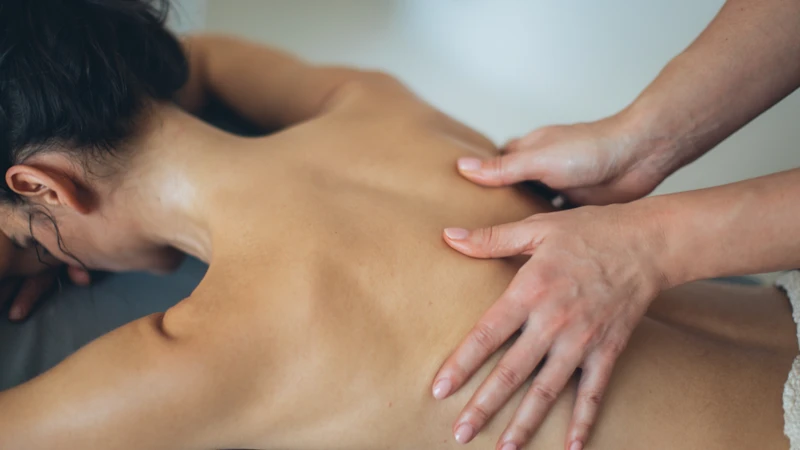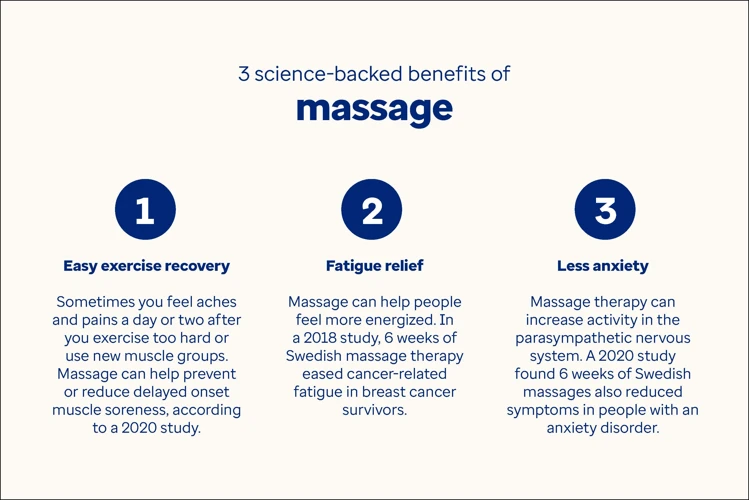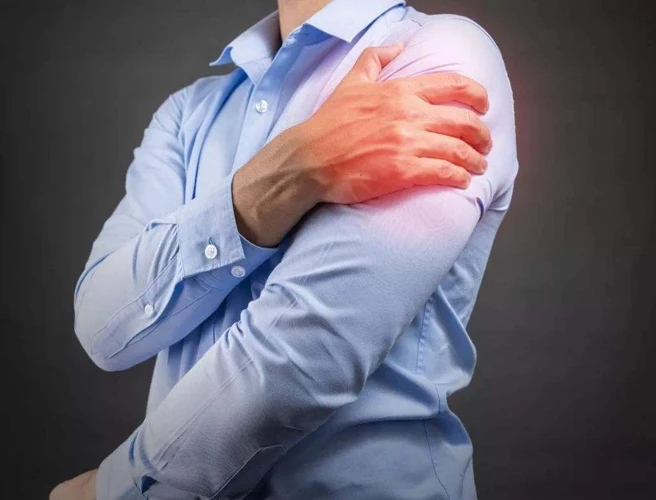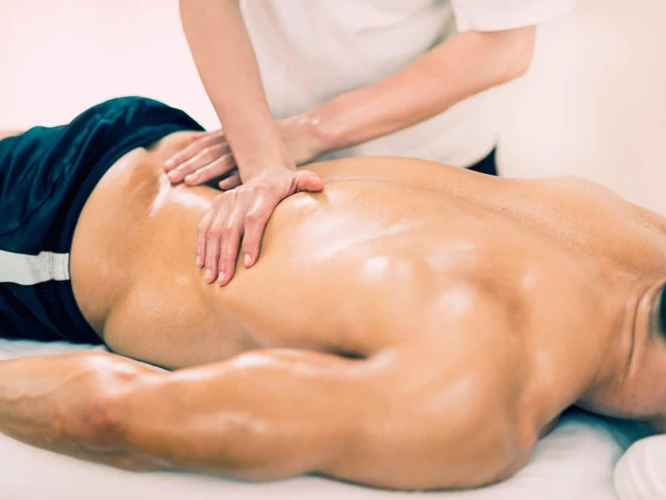Have you ever wondered why massage feels so good? There are many benefits to massage, and it can be a great way to relax after a long day. In this article, we will explore why massage feels so good, and uncover the various health benefits that come along with it. We’ll also discuss the different types of massage that are available, and how to make sure you’re getting the most out of your massage experience. So if you’ve ever asked yourself “Why does massage feel so good?”, read on to find out!
Contents
What Is Massage?

Massage is a treatment in which a therapist manipulates the soft tissues of the body to improve circulation, reduce stress and tension, and improve overall well-being. It is typically performed with the hands, fingers, elbows, and forearms. Massage can be used to treat a wide range of conditions, including chronic pain, digestive disorders, anxiety, headaches, and more.
Massage is also known to have many physical benefits, such as improved circulation, reduced inflammation, and improved muscle and joint function. In addition to these physical benefits, massage has been shown to reduce stress, improve mood, and increase relaxation.
The practice of massage is hundreds of years old, with many different forms and techniques used around the world. Some of the most common massage techniques include Swedish massage, deep tissue massage, and sports massage.
Why Do I Feel So Good After a Massage?
- Massage increases circulation, which helps to deliver oxygen and nutrients to the body’s tissues, improving overall health and well-being.
- Massage helps to reduce stress and tension, improving mood and promoting relaxation.
- Massage helps to reduce inflammation, which can reduce pain and improve joint and muscle function.
- Massage can help to improve digestion and reduce digestive disorders.
- Massage can help to reduce anxiety and improve sleep quality.
In addition to these physical and mental benefits, massage therapy can be a powerful tool for self-care and self-reflection. Massage can help to create a sense of connection and deep relaxation, allowing you to reconnect with your body and mind.
Benefits of Massage

Stress Relief
Massage is an effective way to reduce stress and tension. It relaxes the body and mind, helping to lower cortisol levels. When cortisol levels are lowered, a person can feel less anxious and more relaxed. Furthermore, massage helps to induce feelings of comfort and wellbeing.
Improved Mobility
Massage is also beneficial for improving mobility. It can help to break up tension in the muscles and joints, allowing for better range of motion. Additionally, massage helps to reduce inflammation, which can help to alleviate pain and stiffness.
Pain Reduction
Massage is also effective in reducing pain. It helps to release endorphins, which are natural painkillers, as well as increase blood flow to the affected area. This increased circulation can help to reduce inflammation and promote healing.
Relaxation
Massage is a great way to relax and unwind. It helps to promote a sense of wellbeing and calm, which can help to reduce stress and tension. Additionally, massage helps to stimulate the muscles and promote a sense of relaxation.
Why Shoulder Massage Feels Good
Shoulder massage helps to reduce tension in the shoulders and upper back, allowing for improved mobility and reduced pain. Furthermore, it can help to reduce stress and promote relaxation. Additionally, shoulder massage helps to increase circulation and reduce inflammation in the area, leading to improved overall health and wellbeing.
Why Does Massage Feel Good?

Pressure and Stimulation
Massage therapy is an age-old practice that has been used to relax and invigorate the body. Hands-on pressure and gentle manipulation of the body’s muscles and soft tissues helps alleviate tension, reduce stress, and provide many other benefits. This therapeutic touch can be applied to the entire body or to specific areas, such as the back, making it an ideal form of treatment for those suffering from back pain. The pressure and stimulation of massage can help to stimulate circulation, relax muscles, and improve flexibility, allowing the body to function more effectively.
Release of Endorphins
The physical benefits of massage are amplified by the release of endorphins, which are hormones that are naturally released in response to pain and stress. Endorphins interact with the receptors in the brain to reduce the perception of pain and generate a feeling of euphoria. This natural high is one of the main reasons why back massage feels good, and can help to create a sense of wellbeing, reduce stress, and promote relaxation.
Why Shoulder Massage Feels Good

Improving Flexibility
Getting a shoulder massage is great for increasing flexibility. Massage increases blood flow to the muscles, which can help to loosen tight areas and reduce stiffness. Massage also helps break up scar tissue and adhesions, which can reduce pain and improve range of motion.
Relieving Tension
Another benefit of shoulder massage is that it can help to reduce tension. Massage can help to relax the muscles, which can help to reduce tightness and soreness. This can also help to relieve tension headaches, as well as neck and shoulder pain. Massage can also help to reduce stress and anxiety, which can help to improve overall well-being.
In conclusion, why does it feel good to get a massage? Massage can help to improve flexibility, reduce tension, and relieve pain. Massage can also help to reduce stress and improve overall well-being. Getting a shoulder massage is a great way to relax, reduce pain, and improve overall health.
Why Back Massage Feels Good

Releasing Muscle Tension
Back massage helps to release the muscle tension in the back and neck area, which can be caused by injury, inflammation, stress, or other factors. Massage helps to reduce pain, stiffness and tightness. It also helps to improve mobility and flexibility by relaxing the muscles, which allows for easier movement.
Stress Relief
Back massage helps to relax the body and mind, and reduce stress and anxiety. It can also help to improve sleep quality, as massage has been found to increase the production of serotonin and dopamine, which are hormones associated with relaxation and feelings of well-being. Massage also triggers the production of endorphins, which are hormones associated with happiness and pleasure. These effects can help to reduce stress and improve overall mood.
Why Does It Feel Good To Get a Massage?
Reduction of Anxiety
Massage therapy has been proven to reduce levels of cortisol, the hormone responsible for stress and anxiety. During a massage, the therapist helps to reduce muscle tension, which can have a calming effect on the body and mind. This can lead to reduced levels of stress and improved overall mental clarity.
Increased Feelings of Well-Being
Massage can also lead to a feeling of well-being, due to the release of endorphins. Endorphins are hormones that are released when we feel pleasure and happiness. During a massage, these hormones are released into the bloodstream, leading to a feeling of relaxation and contentment. Massage has also been shown to reduce levels of depression and improve overall mood.
In addition, massage can also improve blood circulation, which can lead to improved energy levels and better overall health. This can help to reduce fatigue and improve concentration, making it easier to stay focused and productive.
Frequently Asked Questions
What Types of Massage are Available?
Massage is a diverse treatment, with various types of massage available depending on what the client needs. Common massage types include Swedish, deep tissue, sports massage, trigger point, and reflexology. Swedish massage is designed to relax the entire body, while deep tissue massage focuses on deeper layers of muscle tissue. Sports massage is designed to treat injuries and enhance athletic performance. Trigger point massage targets specific areas of muscle pain and spasms. Reflexology is a massage technique that focuses on the feet and hands.
How Often Should I Get a Massage?
For optimal health benefits, it is generally recommended to get a massage at least once a month. However, depending on your individual circumstances, you may need to get a massage more or less frequently. If you have a chronic condition or are recovering from an injury, you may need more frequent treatments. On the other hand, if you just want to maintain a certain level of stress relief, you may only need a massage every few months. Talk to your massage therapist about your individual needs to determine the best schedule for you.
What are the Potential Risks of Massage Therapy?
- Tissue Damage:
-
- Massage therapists should be trained in the anatomy of the human body and be aware of the potential for tissue damage. If the massage is too strong it can lead to bruising or tears in muscles or ligaments.
- Infection:
-
- If a massage therapist doesn’t use proper sanitation techniques, it can lead to the spread of infection. This includes using clean linens on each client, washing their hands before and after a massage, and using a clean surface for each massage.
- Allergic Reactions:
-
- Massage therapists should be aware of any allergies that a client may have to oils, lotions, or other products used during the massage.
- Nerve Damage:
- Massage therapists should be aware of the pressure they are applying and ensure they do not press too hard on any nerve endings. This can result in temporary or permanent nerve damage.
What Areas of the Body Can Be Targeted During a Massage?
Massage is beneficial because it can be tailored to target specific areas of the body:
- Back: Massaging the back helps to alleviate tension and improve circulation throughout the area.
- Neck: Massaging the neck helps to reduce stiffness and improve range of motion.
- Shoulders: Massaging the shoulders helps to reduce muscle tension and improve posture.
- Arms and Legs: Massaging the arms and legs can help to improve circulation and reduce stiffness.
- Hands and Feet: Massaging the hands and feet can help to reduce stress and tension in the area.
Massage can also be used to target more specific areas, such as the abdomen, scalp, and face. Each area has its own unique benefits and can be used to improve overall wellbeing.
Is Massage Therapy Covered by Insurance?
Massage therapy is not typically covered by health insurance plans, but some plans may offer limited coverage. It is important to check with your insurance provider to see if massage therapy is covered by your plan. Many employers also offer massage therapy as an employee benefit, so it is worth checking with your employer to see if your plan offers coverage.
Conclusion
Massage therapy is a great way to relax and improve overall health and well-being. It has been shown to reduce stress, pain, and muscle tension, and can even improve circulation and boost energy. Massage can also help with mental health issues such as depression and anxiety. Ultimately, massage can be a great way to relax, de-stress, and improve overall health and well-being.

